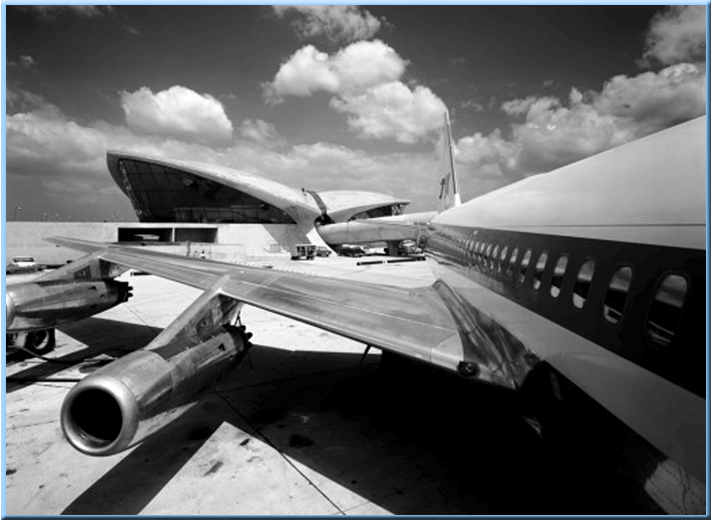

What
makes an airport “great” for cargo?
I guess it depends on who you are
and where you are in the logistics chain because the playing
field changes considerably if the focus is transfer activity
versus origin and destination, or belly cargo versus freighter.
It also changes if the traffic
is domestic or international. But for argument’s sake,
let’s take a classic gateway with a balanced mix of
all of the above.
Here are my top ten criteria for
a world-class cargo operation. (Top ten lists are interesting
because they are always wide open for debate).
-
A balanced flow of cargo
that fills bellies and provides strong backhaul opportunities.
-
A realistic airport
cost structure that includes fuel flowage fees, landing
(or take-off) fees, and facility and ground leasing
costs.
-
A choice of experienced
cargo handlers.
-
Modern facilities sized
and configured to facilitate and expedite handling,
sortation, transfer, and clearance.
-
Adjacent aircraft apron
for freighter parking. The apron should have appropriate
wing tip spacing and a set back from the building that
will enable the easy and safe movement of equipment.
-
A 150’ deep truck
apron that will allow for maneuvering and easy parking.
An adjunct to this would be additional space for truck
queuing.
-
A Customs operation
with available staff that is equipped for electronic
clearance on a 24-hour-a-day basis.
-
The absence of a curfew
and any other restrictive operating conditions.
-
A quality roadway system
that provides easy access and egress to the facilities
and from the airport to the regional highways.
-
An airport management
philosophy that integrates regional economic development
with the air cargo community in a working partnership.
There
are other factors that are important to success such as
a regional labor force and of course a strong business infrastructure
of brokers, forwarders, truckers, and a range of other key
partners.
And while this addresses a “gateway”
there are hundreds of airports with very different operating
parameters and business objectives.
The common thread is to look at
what the specific market needs and understand what is necessary
to deliver it.
It might be interesting to hear
from readers if they have other criteria or to establish
a separate “top ten” from a forwarder, carrier,
and airport perspective. Identifying and prioritizing the
overlaps could prove helpful.
Dan Muscatello
 Mr.
Muscatello is Landrum & Brown’s Managing Director
of Cargo and Logistics. He is a forward-thinking airport
and air cargo executive with more than 30 years of experience,
in both the public and private sectors. He has been
a development strategist for both the business and physical
facility planning of air cargo complexes, and the integration
of ancillary and supporting logistics services that
make them operationally and financially feasible. Mr.
Muscatello comments on various topics of unique common
interest are a regular feature of FlyingTypers. Mr.
Muscatello is Landrum & Brown’s Managing Director
of Cargo and Logistics. He is a forward-thinking airport
and air cargo executive with more than 30 years of experience,
in both the public and private sectors. He has been
a development strategist for both the business and physical
facility planning of air cargo complexes, and the integration
of ancillary and supporting logistics services that
make them operationally and financially feasible. Mr.
Muscatello comments on various topics of unique common
interest are a regular feature of FlyingTypers. |

What
makes an airport great? I have always thought any
airport photographed by the right photographer can
manipulate space and time to reveal the sense of
excitement stirred when departing from the familiar
for destinations yet to be discovered.
In my 40 years of
experience writing about airports and publishing
Air Cargo News/FlyingTypers, the greatest series
of pictures ever taken at any airport are the stunning
black & white photographs of the new TWA Flight
Center at Idlewild Airport (today’s JFK) in
New York City, taken in September 1962 by Ezra Stoller.
Above is one picture
in a series that the late Ezra’s daughter
allowed us to use in our 1978 book Great Airports
Kennedy-A Picture History Idlewild to JFK.
I can look at this
amazing photo and dream of being on that airplane,
or peering out from inside the living sculpture
that is Idlewild, or even peeking from behind those
fulsome, fair weather, stratocumulus clouds moving
lazily across the heavens.
I have always thought
Eero Saarinen’s masterpiece design was given
the benefit of immortality at inception, because
the deftness of the photographer matched the genius
of the architect.
Today the building
still stands in the main part of JFK International
and—if they don’t wreck it in the process—will
find its future as an airport hotel.
Geoffrey
|
|



